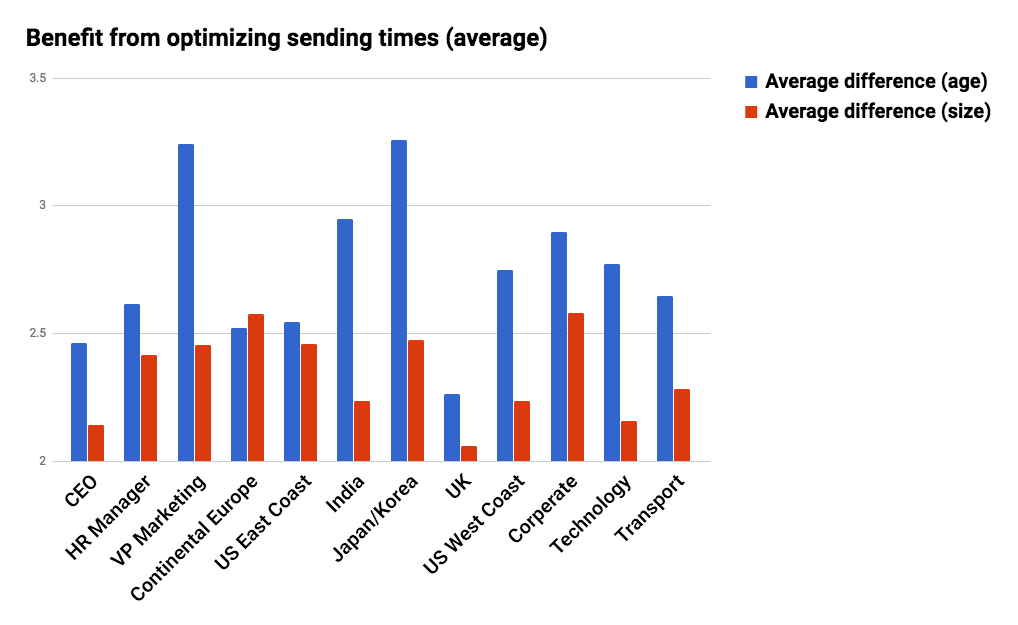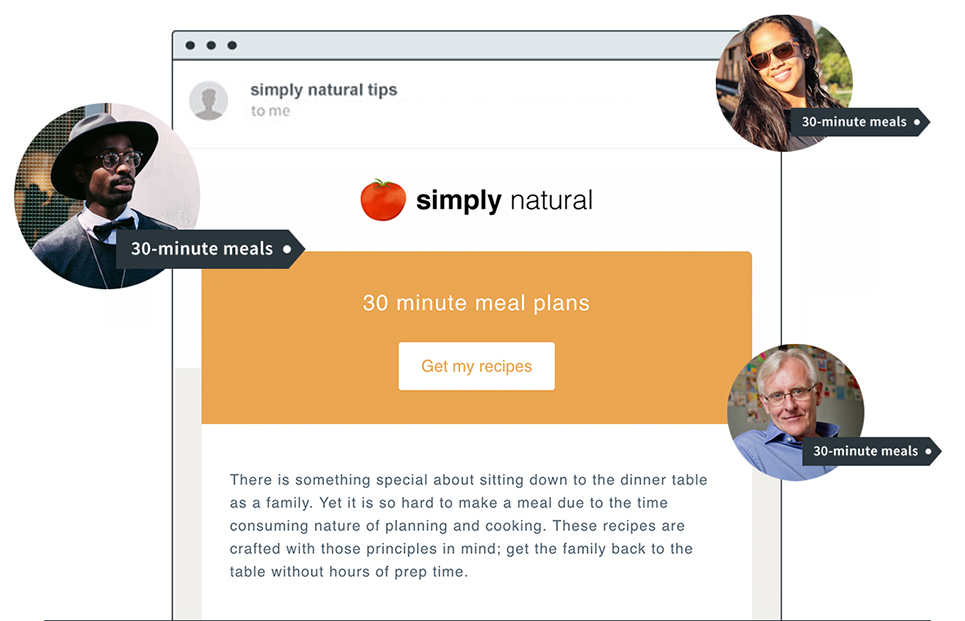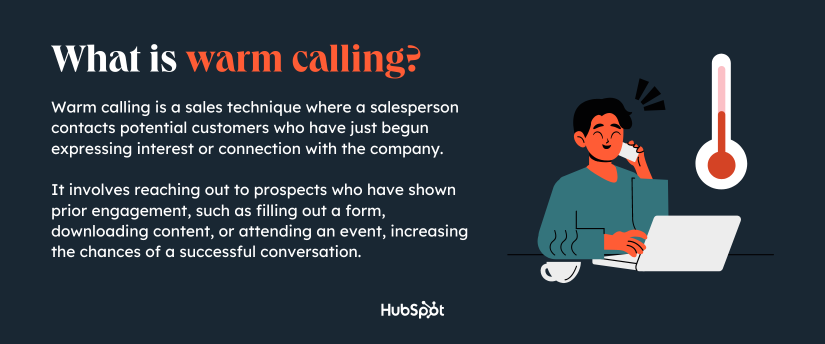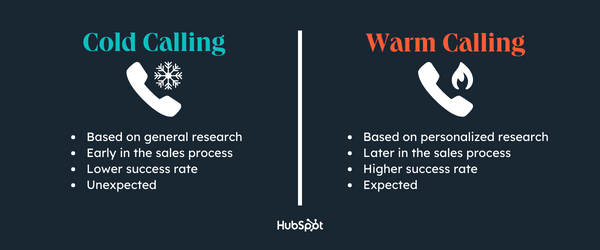SEO can be painful… Very painful.
In 2013, I started executing SEO for a website called LifeCoachSpotter.com. The goal? To generate leads for life coaches who want more paying clients.
Just publish a ton of blog posts and we’re all set, right? “Build it and they will come.”
Well, nothing could be further from the truth.
We launched the site with 50 well-written blog posts, which was no small feat…but the result?
Zero traffic.
How to Achieve Zero Impact SEO Results
The complexity, depth, and multi-disciplinary nature of SEO makes it seemingly impossible to succeed. Google’s algorithm is a mysterious and well-guarded blackbox. Confusion ensues.
When I was working on SEO for Life Coach Spotter, I read and followed everything Rand Fishkin and other SEO gurus advised.
Props to Rand, I love him to death and his advice is top-notch.
However, 90% of the SEO tactics and tips I’d learned just didn’t move the needle.
I experienced the pain of non-stop hustle with nothing to show for it first-hand. I received garbage advice like:
- use keywords in your image alt text
- watch the ratio of follow to nofollow backlinks
- be mindful of the ratio of text to HTML
- optimize your image file names
These factors have zero impact on SEO. Ignore them at all costs if you care about growth.
When you’re focusing on growth and hacking your way to success, you ain’t got time for things that don’t work.
But when you’re clueless ‒ you’ll test out anything and quickly start to learn everything that doesn’t work; a process of elimination.
I tested out dozens of strategies.
Beautiful ideas like broken link-building, guest posting, and far worse tactics like link-building on forums and blog comments.
These well-known, don’t-move-the-needle tactics are your worst possible SEO investment. Stay far away from them.
So what actually moves the needle on your SEO?
From 0 to 20,000 Organic Search Visitors/Month

I knew I was onto something when I saw a 381% increase in overall organic traffic over a 5 month period. This came much later, in 2016, after I had already spent the first 3 years executing everything else that didn’t move the needle.
During this 5-month time period ‒ of a 4x increase in organic search traffic ‒ I tested over 8 ideas, but I ultimately attribute these results to only 2 things:
- well-optimized comprehensive content guides
- link-earning campaigns like this infographic (which is always predicated on outreach)
Here’s a snapshot of what that content creation campaign looks like:
73,647 Words of Optimized, Targeted SEO Content

But wait, it gets better.
Right after that, I tested out a new .edu link-building strategy. It’s called “The Scholarship Strategy” and it has been lovingly documented here.
The results?
Another 538% Increase in Organic Traffic in Just Two Months

That’s a 538% increase after the 381% increase.
In May of 2016, the site’s organic search traffic was 2,147 for the month.
By March of 2017, it was 20,273 for the month.
An 844% increase in organic search traffic.
A substantial breakthrough from the previous 3 years.

Ah-ha!
Real, battle-tested proof of what actually drives results for SEO.
Do you want to know what it is?
- Referring Domains
- Content
- Optimization
If you want to drive substantial results for SEO for your site, don’t take any of these lightly. Let’s dive deeply into each one.
Your 3-Step Game Plan to Blow Up Your SEO
1. Referring Domains: Get Quality and Quantity
While everyone and their grandmother is talking about backlinks, you and I should be talking about referring domains.
What’s a referring domain?
A referring domain is a website that links to your website.
It allows Google to group your friend’s website that is linking to you 20 times as only one referring domain vs 20 backlinks.
Google is smart.
It’s much harder to get 20 referring domains to your website than it is to get 20 backlinks all from one website to your website.
So Google’s ranking algorithm weights this accordingly.
In fact, as of today, Google weights referring domains so heavily, that from all of my experiments, I believe without a shadow of a doubt that referring domains is the most heavily weighted ranking factor in Google’s algorithm.
“The holy grail of SEO.”
There are at least 4 important aspects to referring domains. They are:
- the quantity of them
- domain authority
- trust flow
- relevance
I know from my experience that the Trust Flow of referring domains is an important metric. My .edu link-building strategy did little in terms of relevant or quantity of referring domains (it was only a dozen or so .edu backlinks). The Trust Flow of universities, however, is nothing to sneeze at!
2. Content: No More Blog Posts!
Every content marketer has a different name for the same exact thing:
Each of these SEO content philosophies is the same basic idea, just rebirthed with a new name.
Write phenomenal content that meets the following criteria, and you have a much higher chance of ranking that page:
- long (3,000-12,000 words long)
- very well-written and high-quality
- useful, helpful, and answers common questions
- authoritative
- actionable
- unique
- engaging
Fun to talk about. Hard to do. Ask any content marketer.
In short, you want to write a comprehensive content guide that crushes all of the other competing 500-word or 1,000-word blog posts out there on the topic.
Longer content is positively correlated with higher rankings.
The Number of Blog Posts Published Via WordPress Every Month

Every month on WordPress, 80 million blog posts are getting published.
Do you really want to compete with that?
Let me be the first to tell you: Blog posting for SEO stinks! And here’s why:
- Blog posts are relatively short.
- Blog posts are dated. (Ugh!)
- Blog posts might only target 1-4 keywords.
- Blog posts can cover the same exact topic multiple times.
- Blog posts dilute your internal backlinking efforts.
- Blog posts dilute your link-building efforts from external sites.
- Blog posts have to constantly be written.
- Blog posts have less dwell time since they’re shorter.
- Blog posts are less authoritative.
- Everyone else is doing them.
Nuff said.
I think I’ve made my case here.
On the other hand, the comprehensive content guide:
- is long
- is evergreen
- can be optimized for dozens of related keywords
- is heavily focused on one topic
- allows you to focus your internal linking efforts
- allows you to focus your external link-building
- needs to be written only once
- has longer dwell time which increases conversions and brand awareness
- is naturally authoritative
- has a much higher barrier to entry; gives you a competitive advantage
You only have so much budget and time to produce your onsite content. So focus your resources properly for the highest ROI.
Go big or go home.
3. Optimization: Dozens of Keywords in One Article
Your keywords need to be grouped by topic, and then prioritized and organized.
Once your keywords are grouped by topic, you need to plan out your content outline based on the subtopics within that keyword group.
Headers should be high-volume keywords. Synonyms and keyword variations should be used naturally and normally throughout the text. Keyword phrases should be given careful attention, as the same phrase can pop up a handful of times in different keywords.
Be natural. Stay cool.
Use that keyword a minimum of one time and if it happens to arise more naturally, let it.
That’s it. Let Google figure out the rest. (Afterall, Google is way smarter than you and I). Long-tail phrases should arise normally in your body text.
The point is, Google still heavily depends upon you using those keywords and phrases to consider that page very relevant and rank-worthy for that query. So you have to optimize with the actual keywords in there. If you don’t, you risk not having that page rank for your coveted keywords.
So you have to optimize with the actual keywords in there. If you don’t, you risk not having that page rank for your coveted keywords.
If you don’t, you risk not having that page rank for your coveted keywords.
The 4 most important places to optimize your comprehensive content guide (or any piece of content):
- title tag
- url slug
- header tags
- body text
I don’t know why the old school SEOs are still obsessed with H1 tags. If it’s any header tag (H2, H3, H4) or in the body text, Google gives it more than enough consideration.
How to 10x Your SEO Right Now
So now you know the only 3 high-impact ranking factors in Google’s algorithm that you need to crush. Let me repeat them for you again:
- Referring Domains
- Content
- Optimization
Now what?
Let’s go through each of the nitty gritty tactics we need to implement.
Part 1: Keyword Research for Optimization and Content
The juiciest part of keyword research that 90% of businesses miss is this:
You need to group your keywords together by topic.

Group your keywords by topic
That’s it. You need to group all of those variations of your keywords based on the related theme that runs through them all. Here’s a concrete example:
You need to group all of those variations of your keywords based on the related theme that runs through them all. Here’s a concrete example:
Here’s a concrete example:
- toddler bath toys
- kids bath toys
- best bath toys
- bath toys for babies
- how to clean bath toys
- bath toys for 1 year old
- bath toys for 3-year-olds
- best bath toys for toddlers
- cool bath toys
- bath tub toys
Do you see what everybody is missing with their “keyword research”?
It’s not about the actual research, it’s about how we organize and implement our findings.
We have a dozen variations of [bath] + [toys].
All of these queries are ultimately looking for very similar or related information about bath toys.
To be honest, the full list I have for this keyword group is 150 keywords long!
Imagine your piece of power-content that is optimized and addressing all of the variations, phrases, and user intent just around bath toys.
Imagine if you wrote that piece of content but forgot to mention a simple word like “toddler”, “1-year-old”, or “cool bath toys”.
Your thoroughness pays off in spades.
To find all of your keywords and then group them is not a straightforward process, though I have systematized it.
The first step is simply collecting all of the keywords around all of your topics from as many different sources as you can find.
Here’s my top 10 list of sources for collecting keywords:
- Import previous keyword research.
- Import keywords from Google Analytics/Webmaster Tools.
- “Get Ideas” from Google Keyword Planner from landing page.
- Check and import the keywords that your site is already ranking for
- Check and import keywords that 3-6 competitors are already ranking for.
- “Get Ideas” from competitors’ landing pages in Google Keyword Planner.
- Check competitors’ meta keywords.
- Manually brainstorm a list of ideas and use Google Keyword Planner to “Get Ideas”.
- Get keyword suggestions from Ahrefs, SEMrush, and more.
- Any other sources available.

Keyword Planner
Once you’ve collected keywords from all of these sources, you should have over 2,000 keywords. Next, you need to filter them, remove duplicates, and remove negative keywords.
From here, we have to group them.
I’ve been hacking together tools like this beautiful Word Frequency Counter to see which words and phrases are the most recurring.
Once we’ve found 20-60 recurring words, phrases, or themes we need to label each keyword as having that word stem or not.
To this end, I’m using another hackerific method in Google Sheets with this formula: =IF(RegExMatch(A1,”keyword”),”YES”,”NO”). If the keyword contains that word stem, then it will get labeled appropriately in another column of our spreadsheet with a “YES” or a “NO”. Lovely.
If the keyword contains that word stem, then it will get labeled appropriately in another column of our spreadsheet with a “YES” or a “NO”. Lovely.
Next, sort and organize the keywords by the words they contain and start breaking them apart into groups.
Now that you’ve grouped your keywords together, the next thing we need to do is plan content around these keywords.
In a nutshell, you want to create an outline for your comprehensive content guide based around the highest volume keywords within that group, as well as phrases. You want to include these higher volume keywords in many of the bullet points of your outline (which will become your H1, H2, and H3 tags). For example, the keyword “best bath toys” will become “The Best Bath Toys for Your Child” or “The Best Bath Toys For a Fun Bath”. You want to use your keywords naturally.
For example, the keyword “best bath toys” will become “The Best Bath Toys for Your Child” or “The Best Bath Toys For a Fun Bath”. You want to use your keywords naturally.
You want to use your keywords naturally.
Once your content is planned, go ahead and start writing. We’re aiming for a colossal piece of content like the one the magnificent Dmitry Dragilev (who I met at the Growth Marketing Conference) has documented here. I think that 3,000-12,000 words usually does the job pretty nicely.
I think that 3,000-12,000 words usually does the job pretty nicely.
And the beautiful thing is, our content is already optimized! We already optimized it when we created the outline. Now that you’ve finished writing it, go back and drop in any keywords where appropriate. For example, if you used the word “bath toys” at one point, you might want to work that into the keyword “cool bath toys” or “bath toys for a 1-year-old”. Good. Now our long-tail keywords are getting incorporated too.
Now that you’ve finished writing it, go back and drop in any keywords where appropriate. For example, if you used the word “bath toys” at one point, you might want to work that into the keyword “cool bath toys” or “bath toys for a 1-year-old”. Good. Now our long-tail keywords are getting incorporated too.
For example, if you used the word “bath toys” at one point, you might want to work that into the keyword “cool bath toys” or “bath toys for a 1-year-old”. Good. Now our long-tail keywords are getting incorporated too.
Good. Now our long-tail keywords are getting incorporated too.
Part 2: Link-Earning
Now that your on-page SEO is ship shape, let’s go ahead and start getting those all-powerful backlinks (I mean… referring domains) to your website.
This is where most people get stuck.

Your Site
Look, when it comes to link-earning, you can choose from over a dozen different strategies to pursue. 80% of the strategies out there won’t get you high-impact results.
Let’s just focus on the high-impact strategies that drive real results and forget the rest. Cool?
Link-Earning Campaign Criteria
For link-earning to be effective, it has to meet a few criteria.
First, we want our backlinks to come from websites that are authoritative, trustworthy, high-quality, and relevant (if possible).
Second, we want our links to be earned “editorial links”. If you can just go onto another site and put the links in there yourself, you really don’t have a competitive advantage, do you? Any link that is truly earned means that you rightfully deserve the link because another writer, editor, or webmaster has put it there because your content is worthy of it.
These links have a higher barrier to entry, so it will keep your competitors away.
Third, we want to put our content in front of the right targeted influencers or authorities who are likely to link to it.
There’s no point in mass emailing 100 people if only 10 would truly be interested in it. We execute targeted outreach to put the right content in front of the right people.
Create real value and share it directly with the right people and you’ll be earning backlinks.
There are no shortcuts.
Strategy #1: Original Research
This approach is my favorite and I learned it second-hand from an agency called Fractl. All we’re essentially doing is executing original research and then presenting the data and telling the news media about it.
Why’s it so powerful?
When you are the source of the research, you are the source for citation, and how do people cite sources on the web?
With a backlink!
You want to be the citation and be the reference because that naturally earns you backlinks. To see what I mean, take a look at this case study or any of Fractl’s other case studies to get a real feel for this.
In essence, you’re going to
- perform original research (a survey, internal company data, or curate existing data)
- present your findings (interactive data visualization, charts, infographics)
- pitch it to the media (digital PR and outreach)

The source for research is the source for citation.
Strategy #2: Interactive Data Visualization
While infographics have gotten worn out over the years, interactive data visualizations are super-engaging and a powerful opportunity for link-earning today.
Here are some lovely examples to take a look at:
- Here is Today
- Is It Better to Rent Or Buy?
- World’s Biggest Data Breaches & Hacks
- NBA Top Draft Picks vs Top Performers
While admittedly, making an interactive data visualization is far from easy, it gives you a highly competitive barrier to entry. Since a significant amount of resources (investment, time, focus) go into making one, it means your competitors are likely to shy away from doing it, allowing you stand out from the crowd.
Take a look at the Out of Sight, Out of Mind campaign, which documents the number of victims of drone strikes in Pakistan in a very visually captivating way.
What kind of results did they get?
1,220 referring domains!

Backlinks and referring domains.
When was the last time your backlinking campaign got you that?
Remember, to execute this effectively you must do outreach!
Strategy #3: An Industry Report

Social Media Industry Report
A state of the industry report or white paper not only makes you the source for citations (ie. backlinks), but also naturally positions you as the authority within your industry ‒ a lovely side benefit of your link-earning campaign.
Here’s just one example for you to mull over. This industry report from Social Media Examiner is 50 pages long!
Eke! Sounds like quite a bit of work, doesn’t it? Nobody ever said results-driven SEO was easy.
All I’m suggesting is that if you want to move the needle, you have to invest the resources.
Just take a look at their results:

#Results.
Imagine what this will do for your website’s SEO.
Strategy #4: A Tool
When you make a free, online tool that is useful and valuable to people, we all naturally want to link to it because it’s valuable and useful.
Just like in the previous examples, this is not overnight link-building magic.
More like a ton of Gary Vee-style hustle and hard work.
If you consider the SEO value of creating such a valuable asset, it’s priceless.
Here’s an example for you to play with from SmartAsset. While “mortgage calculator” is a highly competitive search term and dominated by big corporations, this free little online tool from SmartAsset earned them 483 referring domains!

Mortgage Calculator
You’re not going to see this kind of ROI with those old and stale tactics like broken link-building.
Think again.

Referring domains of SmartAsset’s Mortgage Calculator.
Moving the Needle On Your SEO
Just like any other marketing channel ‒ whether it’s video marketing, Facebook Ads, or something else ‒ SEO takes a large investment of resources in order to get breakthrough results.
Where and how you choose to focus your investment resources determines your ultimate ROI.
The real scary/crazy thing about SEO is that it’s so long-term, you can’t run tests quickly.
It can take anywhere from 1 to 6 months to get the results from your experiment.
In other marketing channels, you can test out paid traffic today and see the results right now.
With SEO, we have to follow a long and treacherous process that includes:
- research
- content creation
- outreach
- link-earning
- getting your backlinks crawled by Google
- having those backlinks factored into rankings in the SERPs
- tracking and reviewing the ranking positions and traffic
Despite all of this, the return on investment for SEO is absurdly high for your business.
Afterall, recurring monthly traffic drives recurring monthly revenue (or recurring monthly revenue growth).
Moreover, when your prospective customers are inbound, targeted, and have already learned about your product or service from your website ‒ your business will have found its golden goose.
With high rewards comes quite a hustle and grind to get on Google’s radar and get your business’s website to the bottom of page 1.
After all, you have to deserve to be there. You better start crackin’ on your SEO today so that 6 months from now you’ll have something to show for it!
 If you think it’s hard to sell, you might want to spare a thought for your potential customers: depending on which research you look at, the majority (around 2-in-3) of their buying decision processes end with them deciding to do nothing at all, and sticking with the status quo.
If you think it’s hard to sell, you might want to spare a thought for your potential customers: depending on which research you look at, the majority (around 2-in-3) of their buying decision processes end with them deciding to do nothing at all, and sticking with the status quo. Bob Apollo
Bob Apollo










 Two business professors studied the valuations of 116 unicorns, finding that many overstated their value.
Two business professors studied the valuations of 116 unicorns, finding that many overstated their value.









 It works like this: When building a sign up form, create and add a tag to ensure it's applied to subscribers who opt-in to your list. You can also build your form and apply tags to subscribers based on information they select in a custom field.
To send specific subscribers an email, create a new segment in Manage Subscribers based on the tag. Create your broadcast email and send to your new subscriber segment!
Not using AWeber's forms? Many of our trusted integration partners, like
It works like this: When building a sign up form, create and add a tag to ensure it's applied to subscribers who opt-in to your list. You can also build your form and apply tags to subscribers based on information they select in a custom field.
To send specific subscribers an email, create a new segment in Manage Subscribers based on the tag. Create your broadcast email and send to your new subscriber segment!
Not using AWeber's forms? Many of our trusted integration partners, like 




















![Free Resource: 10 Sales Call Script Templates [Download Now]](https://no-cache.hubspot.com/cta/default/53/64e5789a-605c-4e14-90d9-8aa3df310ee1.png)




